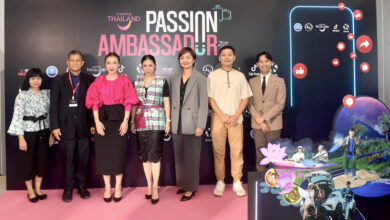Bangkok, 6 July 2015 – The Tourism Authority of Thailand (TAT) has finalised its marketing plan for 2016 that will focus on promoting the kingdom as a “Quality Leisure Destination through Thainess.”
The plan marks the start of a new era for Thai tourism. The wording of the new strategy indicates an end to decades of focussing on “quantity”, as measured by visitor arrivals, and a total shift to “quality” as measured by visitor expenditure, average length of stay, and the overall quality of the visitor experience.

In addition, within the broader context of the upcoming ASEAN integration as well as the national reform process, Minister of Tourism and Sports, H.E. Kobkarn Wattanavrangkul has called on the entire industry, including both the private and public sectors, to work on the principles of the 3Rs: “Restructure, Rebalance and Reposition.”
The theme of this year’s meeting was ‘Synergy for the Best’ because the entire tourism industry will be joining hands to work together to be able to achieve the country’s goals. The Minister said, “The government is promoting close collaboration among all stakeholders with transparency, synergy and quick action.”
In 2016, we are confident that Thailand will remain in the top 3 ranking in terms of international tourism receipts in the Asian region. The targets for 2016, as measured entirely in revenue earnings, are up by 8% over the projected earnings for 2015, or around 2.3 trillion Baht. Also international and domestic tourism will be both up by 8% over the same period, which is above the growth projections for the overall Thai national economy for 2016.
The theme, along with the targets and marketing strategies were finalised at the TAT’s annual marketing plan meeting held in the beach resort of Bang Saen, a rapidly emerging destination about 65 kilometres east of Bangkok. The meeting was attended by more than 400 TAT executives and officers from head office and worldwide.
Mrs. Juthaporn Rerngronasa, Acting Governor of TAT said, “This plan marks the opening of a new chapter for Thai tourism. It is based on the fact that there is more than adequate accessibility to Thailand via excellent air, road and sea connections, as well as smooth facilitation that allows visa-free or visa-on-arrival access for citizens from 68 countries and territories.
“As Thailand has the natural geographical advantage of being located right in the heart of the Asia-Pacific and ASEAN regions, we can be sure of strong arrival figures for years to come, assuming that the external and internal operating environment remains stable. So, we can confidently say that the era of promoting ‘quantity’ is over. The era of promoting ‘quality’ has begun.”
In her speech to the delegates, Tourism Minister H.E. Kobkarn highlighted the importance of the Thai tourism industry for economic development, job creation, and income distribution.

But, she added, tourism is more than just that. “It can also play a major role in enhancing social integration and preserving the environment. Tourism can be a great tool to build love and understanding, and grow the sense of pride in being Thai. This will lead to a balanced development covering the economic, social and environmental aspects of nation building.”
She said that the new policy to develop a sustainable and well-integrated tourism industry would require close cooperation with the public and private sectors and focus on the 3 R’s:
- Repositioning: Gearing towards tourism quality (Quality Leisure Destination).
- Restructure: Identifying new target markets both in terms of geography and customer segments.
- Rebalance: Attaining a balance between economic, social and environmental development by better spreading the benefits of tourism across Thai society, and reducing the social, cultural and environmental impact.
“Such policies must take immediate effect,” the Minister said, urging all the stakeholders to work towards achieving the goals in a unified manner.

The 2016 marketing strategy will retain the Amazing Thailand branding logo as well as the “Thainess” identity; concentrate on niche markets; such as, golfers, weddings and honeymoons, health and wellness visitors and ‘halal tourism’ for Muslim visitors, focus on female travellers, and put balanced emphasis on growing the domestic market to prevent over exposure to the international markets.
The onset of the ASEAN integrated community will play an important role. While regional integration mechanisms will help the 10 member countries better position the region as a single destination in line with the plan to build ASEAN connectivity in order to promote both ASEAN for ASEAN, and ASEAN for ALL.
Mrs. Juthaporn said, “The insertion of the word ‘quality’ into the theme is designed to help the entire Thai tourism industry follow suit by developing quality products and services to cater to this market. There has already been a remarkable improvement in our portfolio of quality tourism products over the years, and we expect this trend to continue in the years ahead.






